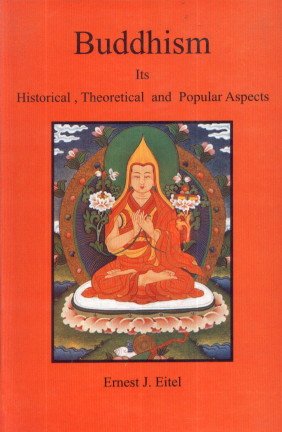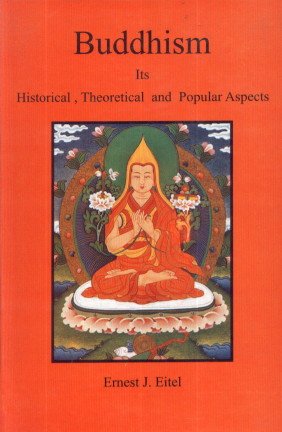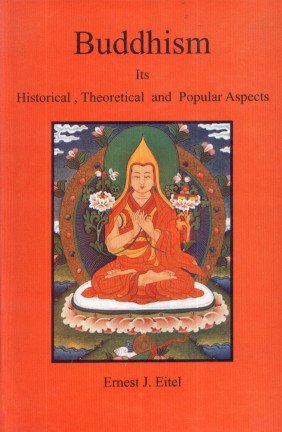Human Rights Abuse on Elderly People
Human Rights Abuse on Elderly People is backordered and will ship as soon as it is back in stock.
Couldn't load pickup availability
Genuine Products Guarantee
Genuine Products Guarantee
We guarantee 100% genuine products, and if proven otherwise, we will compensate you with 10 times the product's cost.
Delivery and Shipping
Delivery and Shipping
Products are generally ready for dispatch within 1 day and typically reach you in 3 to 5 days.
Book Title: Buddhism: Its History, Doctrine, and Practices
-
Author: Ernest J. Eitel
-
Language: English
-
Pages: 155
-
Cover: Hardcover
-
Dimensions: 22.5 cm x 15 cm
-
Weight: 340 gm
-
Edition: 2008
-
ISBN: 9788170308744
Book Description
From the Jacket:
This book offers a popular sketch of Buddhism, presenting it from various perspectives: as an event in history, as a system of doctrine, and as a popular religion. It provides a broad understanding of Buddhism for those interested in its origins, development, and widespread impact on cultures and societies.
Preface to the Third Edition:
The first edition of this work was well-received, particularly in China, where it was noted for its clarity and approachability. The success of this initial publication led to the release of a second edition in 1873, which gained popularity in Europe and America. The third edition has been revised to incorporate new findings from recent investigations, although the core content and structure of the original lectures remain largely unchanged. These revisions aim to provide a more thorough and current view of Buddhism while maintaining the book’s original purpose as an accessible introduction to the religion.
Preface to the First Edition:
The book is based on a series of popular lectures that the author delivered in Hong Kong during the winter of 1870-71. These lectures were intended to offer a general introduction to Buddhism, with a focus on the most prominent features of the religion. As such, the author intentionally avoided delving into complex details, making the work suitable for a wide audience. The Hand-book for the Student of Chinese Buddhism (1870) is referenced as a more detailed resource for readers wishing to explore Buddhism in greater depth. This work aims to be an accessible starting point for those unfamiliar with the subject.
Key Themes:
-
Buddhism as a Historical Event:
The book traces the origins of Buddhism, exploring its emergence in India around the 6th century BCE and its spread across Asia. This section also highlights key historical milestones in the development of the religion, from its foundation by Siddhartha Gautama (the Buddha) to its expansion across the world. -
Buddhism as a System of Doctrine:
Eitel discusses the core doctrines of Buddhism, such as the Four Noble Truths, the Eightfold Path, karma, samsara, and nirvana. This section delves into the philosophical underpinnings of the religion and its focus on personal transformation, suffering, and liberation. -
Buddhism as a Popular Religion:
This section of the book looks at the ways in which Buddhism has been practiced by the masses throughout history. It covers the rituals, temples, monasticism, and the role of Buddhism in everyday life. It explores how Buddhism has adapted to different cultures and societies and influenced various regions. -
Buddhism’s Influence and Adaptation:
The book touches on the cultural and social impact of Buddhism, particularly in East Asia, including China, Japan, and Southeast Asia. It examines how Buddhism has shaped the art, literature, philosophy, and social structures of these regions.
Why Read This Book?
-
Accessible Introduction to Buddhism:
Buddhism: Its History, Doctrine, and Practices is an ideal starting point for those seeking an overview of Buddhism without delving into highly technical or academic details. The book is written in a clear, straightforward manner, making it accessible to a wide audience. -
Historical Context and Development:
The book provides a historical perspective on the development of Buddhism, explaining its origins and spread to various parts of the world, particularly in East Asia. -
Comprehensive Yet Concise:
While the book covers a wide range of topics within Buddhism, it remains concise enough for a general audience. It introduces both the doctrinal and practical aspects of the religion, providing a balanced view of its complexities. -
Revised Third Edition:
The third edition includes updates based on recent scholarship, making it a more current resource while retaining the original structure and approach that made it popular in the first place.
About the Author:
Ernest J. Eitel was a German missionary and sinologist who spent many years in China, where he became deeply interested in Chinese Buddhism. He is well-known for his work in Buddhist studies and Chinese philosophy, contributing to the Western understanding of these subjects. His works, including this book, aim to make Buddhism accessible to those outside the tradition, particularly in the 19th century Western context.





